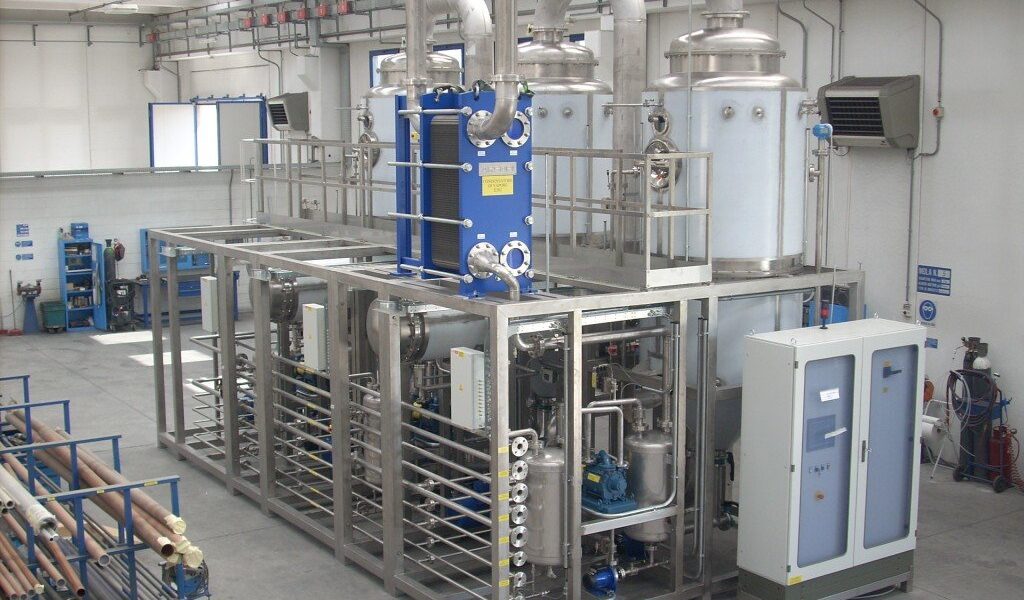Industrial vacuum systems are crucial in maintaining a clean and safe working environment in various industries. These systems are designed to handle large volumes of debris, dust, and other contaminants efficiently, improving overall productivity and reducing the risk of occupational hazards. One type of industrial vacuum system that stands out in terms of efficiency and convenience is the industrial central vacuum system. In this article, we will explore the key aspects of designing an efficient industrial central vacuum system, highlighting its benefits and providing practical insights for implementation.
Industrial Central Vacuum Systems
Industrial central vacuum systems are powerful and versatile solutions that can be tailored to meet the specific needs of different industries. Unlike traditional portable vacuum cleaners, which require manual handling and frequent emptying, central vacuum systems are designed for continuous operation and can handle heavy-duty cleaning tasks. These systems consist of a centrally located vacuum unit connected to a network of pipes and hoses that reach various work areas in the facility.
Benefits of Industrial Central Vacuum Systems
- Enhanced Productivity: Industrial central vacuum systems significantly improve productivity by reducing cleaning time and effort. With strategically placed inlet valves, operators can quickly connect hoses to clean areas as needed, eliminating the need to move heavy equipment or waste time setting up individual portable vacuums. This streamlines the cleaning process, allowing employees to focus on core tasks and increasing overall operational efficiency.
- Improved Air Quality: Airborne particles and contaminants pose a significant health risk to employees in industrial settings. Industrial central vacuum systems effectively capture and remove these pollutants, improving indoor air quality and reducing the risk of respiratory illnesses. These systems create a healthier and safer work environment by eliminating dust, debris, and harmful substances, such as chemicals or allergens.
- Cost Savings: While the initial investment in an industrial central vacuum system may seem substantial, the long-term cost savings are worth considering. These systems have lower maintenance requirements than traditional vacuum cleaners, reducing downtime and repair costs. Additionally, central vacuum systems have larger storage capacities, minimizing the need for frequent emptying and disposal of waste, which can incur additional expenses.
Designing an Efficient Industrial Central Vacuum System
- Assessing Facility Needs: The first step in designing an efficient industrial central vacuum system is to assess the facility’s specific needs. Consider factors such as the size of the facility, the types of contaminants present, and the required suction power. This assessment will help determine the appropriate size and configuration of the central vacuum system, ensuring optimal performance and effectiveness.
- Choosing the Right Equipment: Selecting the right equipment is vital for the success of an industrial central vacuum system. Consider factors such as motor power, filtration capabilities, and noise levels. High-powered motors and advanced filtration systems will ensure efficient suction and effective containment of contaminants. Noise reduction features are also important, as excessive noise can impact employee comfort and productivity.
- Designing the Network: The network design of an industrial central vacuum system involves planning the layout of pipes and hoses throughout the facility. It is essential to strategically position inlet valves in convenient locations, ensuring easy access for operators. The network should be designed to minimize the length of piping and the number of bends, as these factors can affect suction power. Collaborating with a professional designer or consultant can help optimize the network layout for maximum efficiency.
- Ensuring Proper Maintenance: Regular maintenance is crucial to keep an industrial central vacuum system operating at peak performance. This includes routine inspections, filter replacement, and cleaning of pipes and hoses. Maintaining a proactive maintenance schedule will help prevent clogs, reduce wear and tear on the system, and extend its lifespan. It is also important to train employees on proper usage and maintenance procedures to ensure the longevity and efficiency of the system.
Implementing Best Practices for Efficiency
- Optimal Placement of Inlet Valves: When designing the network for an industrial central vacuum system, strategically placing inlet valves for easy access is crucial. Consider each area’s workflow and cleaning requirements, and position the valves accordingly. This will minimize hose lengths, reduce energy consumption, and maximize efficiency during cleaning operations.
- Proper Sizing of Components: Ensuring that the components of the central vacuum system are appropriately sized is vital for efficiency. Oversized or undersized pipes, hoses, and fittings can hinder airflow and decrease suction power. Consult with experts or manufacturers to determine the correct sizing requirements based on the system’s specifications and the facility’s needs.
- Utilizing Advanced Filtration Systems: High-quality filtration is essential for effectively capturing fine particles and contaminants. Consider investing in advanced filtration systems, such as HEPA filters, to remove dust, allergens, and hazardous materials efficiently. These filters provide cleaner exhaust air and maintain optimal airflow throughout the system.
- Implementing Energy-Efficient Solutions: Energy efficiency is critical to designing an efficient industrial central vacuum system. Opt for energy-efficient motors and components that consume less power without compromising suction capabilities. Additionally, consider incorporating features like automatic shut-off systems that activate when the system is not in use, reducing energy wastage.
Achieve Efficiency and Safety with Complete Engineering Solutions’ Industrial Central Vacuum Systems
Designing an efficient industrial central vacuum system is crucial for optimizing productivity and ensuring a clean and safe working environment. At Complete Engineering Solutions, we understand the importance of thoughtful equipment selection, network design, and proper maintenance to meet your facility’s unique needs. Experience enhanced productivity, improved air quality, and long-term cost savings. Providing a clean and safe working environment not only safeguards employee well-being but also contributes to the overall success of your industrial operation.
Ready to create a more efficient and sustainable workplace? Trust Complete Engineering Solutions for your industrial central vacuum system needs.





